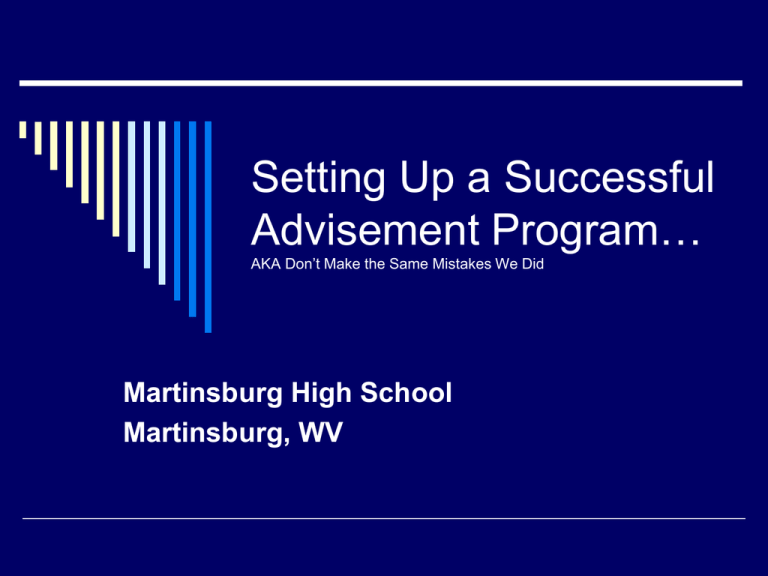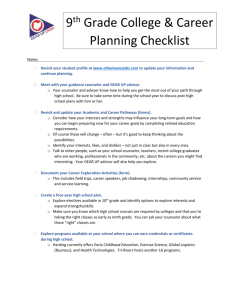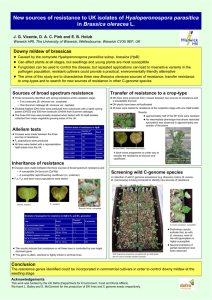Setting Up a Successful Advisement Program… Martinsburg High School Martinsburg, WV
advertisement

Setting Up a Successful Advisement Program… AKA Don’t Make the Same Mistakes We Did Martinsburg High School Martinsburg, WV Why Implement an Advisement Program Links students to a caring adult Creates safe and positive school environment Links parents to school Connect students to school Why Implement an Advisement Program Focused curriculum includes career, academic and personal/social lessons Provide a smooth(er) transition from middle school Prepare students for life after high school Don’ts—Things we learned the hard way Introducing the concept to your faculty One time presentation No chance for questions School counselor makes the presentation No follow-up in-services Don’ts—Things we learned the hard way Dealing with Resistance Meet with resistance/power “I’m right and you are wrong.” Ignore requests for help Don’ts—Things we learned the hard way Getting Reluctant Faculty Onboard Have a school counselor talk to them Have teachers write/copy their own lesson plans Fail to pair with an onboard teacher Don’ts—Things we learned the hard way Leave a substitute to their own devices Let the program “Run itself” Meet just once a week Things to Do Introducing the concept to your faculty Summer workshop-department chairs, other faculty (including resistant members) Informal department talks with administrator Principal is primary presenter Things to Do On agenda at every faculty meeting Reports from administrators, counselors, teachers (advisors) Time for discussion Things to Do Monthly training Before/after Staff school development days Department meetings Evaluations completed by students and teachers after each session Things to Do Dealing with Resistance Expect it Do not meet it with defensive attitude Give vent resistant members time to Things to Do Revisit the issue with resistant faculty Provide Have ongoing support department chairs, others speak with them One on one discussion with principal (frequent supervision) Things to Do Getting resistant faculty “on board” Group discussion with principal before training whole faculty Ask what can be done to get them Things to Do Implement “positive support” programs like “Capturing Kids’ Hearts” Pair teachers for instruction Experienced Positive with new with resistant Well-written lesson Easy to implement Multiple lesson from which to choose Website with resources available Things to Do School coordinator reviews lessons well in advance to determine if lessons: require any school-specific forms should be divided into more than one part require any pre-preparation on the part of the students or advisor require any prompts or special supplies Things to Do School coordinator reviews lessons well in advance to determine if lessons: suggests internet access to maximum lesson benefits, although all lessons can be delivered without internet access provide resources for alternate ways of facilitating to better align with the advisor’s teaching style and your particular students’ learning styles. Things to Do Support for lesson delivery— counselor/committee Lessons member available at least a week in advance School/grade Support level coordinator for substitutes Advisor’s Role Have students develop rules Hold students to these rules Talk individually with advisees whenever possible Keep expectations realistic Advisor’s Role Allow group time for discussions and concerns Be firm but understanding Show interest Be flexible Be sensitive in choosing your words Advisor’s Role Use your own style in presenting lessons You will not have all the answers Know where to go for support Have fun with lessons; be creative Evaluate regularly

